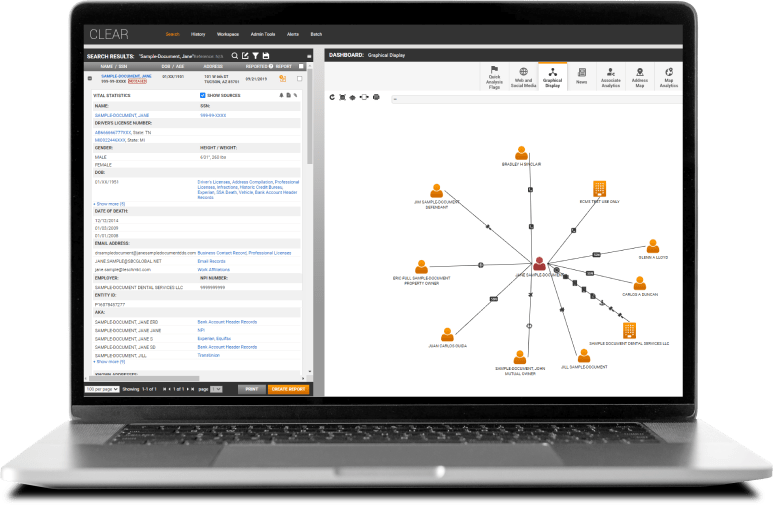Jump to ↓
| What is the Clery Act? |
| How technology can make campuses safer |
| The future of campus safety |
With college and university students returning to campus, administrators and professors are focused on providing them with a deeply enriching learning environment. But too often, these environments can become dangerous. While cases of on-campus shooters grab the most media attention, there are numerous other instances of sexual assault, robbery, and other violent crimes.
With many challenges that law enforcement faces, these are the situations that the federal Clery Act was designed to reduce. This legislation was passed to enhance the campus police safety process, and it’s intended not only to ensure that students, faculty, and parents are informed about campus safety but also to encourage educational institutions to continually improve their security measures.
Though the Clery Act has been a catalyst for campus safety initiatives, media stories in the last 10 years alone make it clear that there’s more that campuses and law enforcement can do. No campus wants to put its students, staff, and faculty at risk. No college or university wants to put itself at risk for liability should a crime be committed within its campus. To meet the goals of the Clery Act and protect themselves and their residents from risk, institutions of higher learning need to pursue continuous improvement of safety protocols.
What is the Clery Act?
Enacted in 1990 and named for Lehigh University student Jeanne Clery, whose murder triggered nationwide outrage over lapses in on-campus safety, the Clery Act requires higher education institutions that receive federal funding to collect, report, and disseminate crime data to the public each year. It also compels institutions of higher learning to report crimes that occur on campus, in off-campus buildings, and on property owned or controlled by the college or university.
To be in compliance with the Clery Act, colleges and universities must prepare a security report each year that covers policies concerning campus security, such as those pertaining to alcohol and drug use, sexual assault, and how crimes are reported and addressed. The Clery Act also requires colleges and universities to provide timely warning notices in the event of a crime that may pose an ongoing threat, giving students, faculty, and staff the time they need to take precautions for their safety.
There are a number of preventive measures that campus law enforcement and security personnel can implement to meet the Clery Act’s requirements. These include such basic but effective strategies as routine patrols and the visible presence of security personnel in and around campus. In addition, campus police have been increasingly engaging in community policing practices, building relationships to foster a safer campus environment. These efforts include training, workshops, and seminars designed to educate students and staff on ways they can better protect themselves while on campus property.
And one of the most important strategies for strengthening the campus police safety process is the use of technology.
How technology can make campuses safer
Advancements in technology can help combat law enforcement challenges. Innovative technology has significantly bolstered campus security’s efforts to comply with the Clery Act and enhance overall safety. Campuses have been putting in place sophisticated surveillance systems that include high-definition cameras and automated motion sensors. These technologies not only help security personnel monitor unusual activities. They also can allow them to undertake more thorough investigations of those suspicious actions.
What’s more, there have been remarkable improvements in emergency communication systems. Mass notification systems that send instant alerts via text, email, or loudspeakers help to quickly disseminate information during a crisis. These notification technologies can include apps that allow students to report crimes anonymously or request a security escort. They provide discreet and accessible ways for students, faculty, and staff to engage with campus security. For these systems to be effective, of course, communications data needs to be kept entirely current. Thomson Reuters, for instance, offers a solution that allows campuses to run a large list of contacts through its CLEAR data technology platform to ensure that they have the best phone numbers and email addresses for faculty members, students, and employees.
Another technique that many campuses are integrating into their safety efforts is the use of data analytics. Digital tools that can collect and analyze visual and other data can aid campus law enforcement and security personnel in identifying crime hotspots and times of increased risk. Using this data-driven approach, they can react more swiftly to incidents and deploy preventive measures more effectively.
The future of campus safety
Since its passage nearly a quarter-century ago, the Clery Act has been instrumental in promoting transparency and safety in educational institutions. Mandating crime reporting and timely warnings has informed the public and spurred colleges and universities to improve their safety protocols. The strategic use of technology further aids these efforts, offering innovative solutions that enhance security and ensure compliance with federal requirements. The emergence of artificial intelligence and machine learning is likely to provide campus security forces with new tools to ensure staff and student safety. As technology evolves, it will continue to play a crucial role in campus security, thus making educational environments less risky and more fulfilling for everyone.
To learn more about how colleges and universities can further strengthen campus safety by using data-driven technology and ensuring their safety program’s integrity by ensuring that they’re using the most current phone numbers and email addresses, explore how Thomson Reuters’ CLEAR platform is being successfully used by law enforcement and other security personnel.
 |
Thomson Reuters is not a consumer reporting agency and none of its services or the data contained therein constitute a ‘consumer report’ as such term is defined in the Federal Fair Credit Reporting Act (FCRA), 15 U.S.C. sec. 1681 et seq. The data provided to you may not be used as a factor in consumer debt collection decisioning, establishing a consumer’s eligibility for credit, insurance, employment, government benefits, or housing, or for any other purpose authorized under the FCRA. By accessing one of our services, you agree not to use the service or data for any purpose authorized under the FCRA or in relation to taking an adverse action relating to a consumer application.








